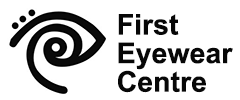Myopia boom and intervention.
Understand the risk factors of high myopia before myopia boom.
In 2010, it was estimated 1.9 billion people worldwide were affected by myopia. The number might increase to 2.5 billion people by 2020.
Every dioptre increase in myopia increases the risk of developing structural changes at the retina and optic disc, the risk of developing sight-threatening eye disorders and high myopia that is more than -6.0DS (“ 600 degrees”).

myopia boom
High myopia is now a leading cause of visual impairment and blindness in many countries across Asia.
The figure from Practical applications to modify and control the development of ametropia by P R Sankaridurg and B A Holden provides the annual and estimated progression data for 508 spectacle wearers of mostly Asian ethnicity, including Singapore aged 6–16 years.
These datas indicate that the younger the onset, the greater the annual progression and risk of having high levels of myopia. An intervention that can delay the onset of myopia by 1 or 2 years can significantly delay or prevent the eye from reaching −6.0 D or more of myopia.
There is an urgent need to intervene with both development and/or progression of myopia to reduce the burden and prevent the onset of blinding diseases that are associated with high myopia.
Pharmaceutical treatments are effective in controlling eye growth but are associated with deleterious side effects. Optical strategies that induce myopic defocus at the retina such as peripheral defocus reducing lenses, simultaneous defocus lenses, bifocals, and orthokeratology as well as environmental influences such as increased outdoor activity show promise and provide a substantially risk-free environment in which to control eye growth.
Orthokeratology has also been found to be effective in reducing progression of myopia.
Read WHO report on impact of myopia.
